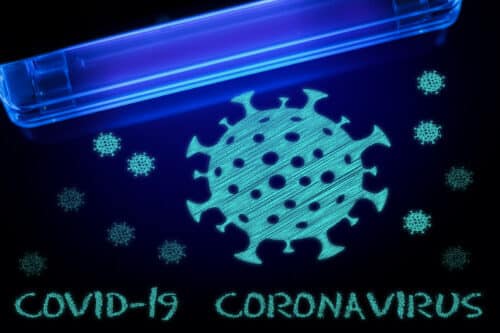Researchers from Tel Aviv University have proven that the corona virus can be killed efficiently, quickly and at low cost - using light emitting diodes (LED) in the ultraviolet (UV) range

A revolution in the field of disinfection? Researchers from Tel Aviv University have proven that the corona virus can be killed efficiently, quickly and at low cost - using light emitting diodes (LED) in the ultraviolet (UV) range. This is the first study of its kind in the world conducted on the disinfection of a virus from the corona family using UV-LED irradiation. "The whole world is now looking for effective disinfection solutions against the corona virus," says Prof. Hadas Meman, head of the environmental engineering program of The Ivy and Alder Fleishman Faculty of Engineering and a researcher at the Center for Nanoscience and Nanotechnology at Tel Aviv University.
"The problem is that in order to disinfect a bus, a train, a sports hall or an airplane using chemical spraying, physical personnel are needed, and for the spraying to be effective, the chemical must be given time to work on the surface. We know, for example, that the medical teams do not have time to manually disinfect, for example, the keyboards of the computers in hospitals and other surfaces - and the result is infection and downtime. On the other hand, the disinfection systems based on LED lights can be installed, for example, in the ventilation system and in the air conditioner, and it will disinfect the air drawn into it that is emitted into the room after disinfection."
The research was led by Prof. Meman, and was conducted in collaboration with Prof. Yoram Gershman from Oranim College, Dr. Michal Mandelbaum, Director of the National Center for Influenza and Respiratory Viruses from Tel Hashomer, and Nehemiah Friedman from Tel Hashomer. The article was published in the Journal of Photochemistry and Photobiology: Biology.
As part of the study, the researchers decided to check what the optimal wavelength is for killing the corona virus, and found that at a length of 285 nanometers, the killing efficiency is similar to that of 265 nanometers, when it takes less than half a minute to kill more than 99.9% of the corona viruses. This result is significant, because the cost of LED bulbs around 285 nm is much lower than LED bulbs around 265 nm, and they are also more available on the market. The scientific development will later allow the industry to make the necessary adjustments and install the bulbs in robotic systems or air conditioning systems, vacuum systems and water systems, thus effectively disinfecting large surfaces and spaces. Prof. Maman estimates that the technology will be available for use soon.
A simple and cheap solution
"We discovered that it is quite simple to kill the corona virus using LED bulbs that emit ultraviolet light," explains Prof. Meman. "But no less important than that - we killed the viruses using cheaper and more available LED bulbs, which consume little energy and do not contain mercury like normal bulbs. Our research has commercial and social implications, with the ability to integrate such LED lights into all our life systems, safely and quickly. Of course, as always on this topic of ultraviolet radiation, it is important to make it clear to people that it is dangerous to try to disinfect surfaces in the home in this way. You need to know how to plan these systems and how to work with them and not be exposed to light directly."
It will be clarified that ultraviolet irradiation is a common method for killing bacteria and viruses, and most of us are familiar with disinfection bulbs such as those from water purifiers, such as Tami4. UV radiation mainly damages the nucleic acids. Last year, the team of researchers led by Prof. Meman and Prof. Gershman registered a patent for the combination of different UV frequencies, which results in a two-system damage to the genetic load and proteins of the bacteria and viruses - and does not allow them to recover. "In the future we would like to test our unique combination of integrated damage mechanisms on different surfaces, air and water."
More of the topic in Hayadan:
- Researchers at the Technion, in Spain and in the UK present a new-old approach to disinfecting air and surfaces from the corona virus
- Frequent hand washing, disinfecting surfaces and avoiding physical contact reduce the risk of contracting the corona like masks and gloves
- Researchers at the Technion have developed effective and long-lasting disinfectants that damage the infection mechanism of the corona virus
